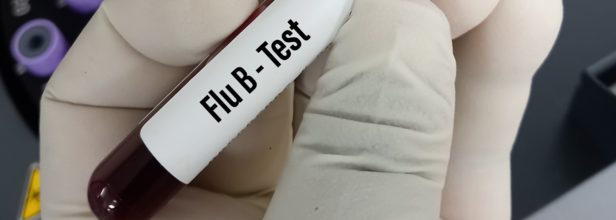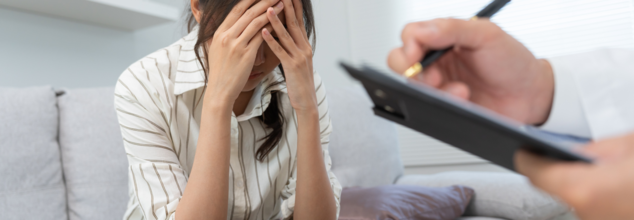- Health Conditions A-Z
- Health & Wellness
- Nutrition
- Fitness
- Health News
- Ayurveda
- Videos
- Medicine A-Z
- Parenting
- Web Stories
Hot Yoga Could Help You Fight Depression: 10 Poses To Try

Hot Yoga (Credit: Canva)
Hot yoga may be a powerful tool in the fight against depression, a new study has found. Hot yoga is a type of yoga that is done in a heated room. This is done to increase sweating and losen muscle. Meanwhile, in the study, 80 participants were divided into two groups: one group attended at least two 90-minute hot yoga sessions per week. At the same time, the other was placed on a waiting list and received no immediate intervention.
Despite the recommendation to attend two sessions weekly, participants who attended just one class per week still experienced noticeable improvements in their mental health. On average, participants in the hot yoga group attended 10.3 classes over eight weeks.
The results were striking: 44% of those in the hot yoga group reported their depression symptoms had improved so significantly that they were considered to be in remission. Additionally, two-thirds of participants in the hot yoga group said they saw a reduction in their depression symptoms. In stark contrast, only 6.3% of those in the waiting list group reported any improvement.
These findings suggest that regular hot yoga sessions could offer a promising, accessible treatment option for individuals struggling with depression. As researchers continue to explore alternative therapies for mental health, this study provides compelling evidence of the potential benefits of incorporating hot yoga into a treatment plan.
10 Hot Yoga Poses You Can Try
1. Downward-Facing Dog (Adho Mukha Svanasana)– Stretches the hamstrings and spine while strengthening the arms and shoulders.
2. Warrior I (Virabhadrasana I)– Strengthens the legs and core, while opening the hips and chest.
3. Cobra Pose (Bhujangasana)– Strengthens the spine and opens the chest and abdominal muscles.
4. Child's Pose (Balasana)– Relieves tension in the back and hips, promoting relaxation.
5. Tree Pose (Vrksasana)– Improves balance and focus while strengthening the legs and core.
6. Triangle Pose (Trikonasana)– Stretches the hips, hamstrings, and torso, while strengthening the legs and core.
7. Standing Forward Bend (Uttanasana)– Stretches the hamstrings and back, calming the mind.
8. Bridge Pose (Setu Bandhasana)– Strengthens the glutes and lower back while opening the chest.
9. Locust Pose (Salabhasana)– Strengthens the back, glutes, and legs while opening the chest.
10. Pigeon Pose (Eka Pada Rajakapotasana)– Opens the hips and relieves tension in the lower back and glutes.
World IVF Day: What Makes The IVF Journey So Hard On The Mind?

In vitro fertilisation (IVF) is not just about science, syringes and success rates. What lies behind the walls of fertility clinics is a deeply personal journey filled with hope, heartbreak and resilience, making it more than just a medical procedure. Beyond the social taboos, infertility brings huge stress to the patients. And while IVF offers hope, it does not come easy. It is a rollercoaster ride that patients experience as they take on the road to this procedure; highs and lows can take a severe mental toll on them.
However, for those unversed, infertility has been classified by the World Health Organisation as a disease like diabetes or hypertension; the social taboo around it still persists. Over the years, advancements in reproductive science have made IVF treatments more patient-friendly and significantly improved outcomes. Yet, the focus often leans heavily on science, expertise and clinic proficiency, while the mental and emotional toll on the couple is overlooked.
For many, the psychological impact of IVF can match that of the death of a family member or going through a divorce. Although many people find IVF very stressful, every patient experiences it differently. Personalities and life experiences play a big role in determining how one handles the process and what part of IVF they find most difficult.
Why Is IVF So Emotionally Draining?
We ask an expert to break down several key factors that contribute to the immense stress IVF brings:
- Uncertainty of Outcomes
- Physical Strain
- Societal Pressure
- Guilt and Shame
- Depression After Failed Attempts
- Relationship Strain
Learning to Cope with Support Systems That Help
There is light at the end of the tunnel, and as Dr Saple says, there are several strategies that can help couples better cope with the IVF process.
- Psychological Counselling
- Support Groups
- Mind–Body Practices
Setting Realistic Expectations
“IVF may take more than one cycle to succeed,” she explains. Being mentally prepared for the outcome, while knowing you have done your best, helps couples accept results with resilience.
It is Okay to Ask for Help
As Dr Saple reminds us, mental and emotional health are as important as physical health during IVF. Prioritising emotional wellbeing not only makes the journey more bearable but can also improve the overall outcome. “Seeking help is a sign of strength, not weakness,” she says.
Family Urges Flu Vaccination After 8-Year-Old's Near-Fatal Influenza B Fight

Credits: Canva
Millie Campbell was just eight years old in 2019 when a missed flu shot turned into a life-threatening ordeal, notes ABC News, Australia. What began with aches in her legs soon escalated into multiple organ failure caused by influenza B, a virus her parents never imagined could be so severe.
“They had to drain 200 millilitres of fluid from her heart, it was struggling,” her mother Stephanie Campbell recalled. “I think the doctor's words were: ‘Your daughter could die tonight’.”
Millie was airlifted from Newcastle to Westmead Children’s Hospital in Sydney, reports ABC News. Soon after arriving, she went into cardiac arrest. Her father, Ian Campbell, described the scene as surreal. “There was no indication she was going to survive,” he said.
A Long Road to Recovery
Millie, previously fit and healthy with no pre-existing conditions, spent weeks in intensive care and six months in hospital. The damage from being on life support for so long led to poor circulation, and eventually, doctors had to amputate her left foot.
She had to learn to walk again. Today, reports ABC News, Millie uses a prosthetic leg and has turned to swimming not just for rehabilitation, but as a passion, one that has taken her to national championships and World Trials. Her eyes are now set on the 2028 Paralympics in Los Angeles.
“Millie’s recovery will be a lifelong journey,” Ms Campbell said. “Seeing how severe the flu can be, our message is: talk to your medical practitioner about the vaccine.”
Why Influenza B Is Hitting Children Hard
Although influenza A typically gets more public attention due to its pandemic potential, Australia has seen a sharp rise in influenza B cases, especially in children aged 5 to 16. According to Professor Patrick Reading from the World Health Organization (WHO) Collaborating Centre for Influenza Research, type B can often be more severe in children, though the reason remains unclear.
“It's a bit of a mystery,” Professor Reading told ABC News. “We see this association, but we can't say there's something specific about the virus that causes it to affect children more.”
Vaccination rates among this age group are currently the lowest of all, following a steady decline since the COVID-19 pandemic. Professor Reading warned that fading immunity, combined with lower vaccine uptake, is placing a burden on the healthcare system.
“We're not through the worst of it yet. Flu circulation continues through August to October,” he added. “It’s not too late to get vaccinated.”
Confusion Around Flu Vaccine Access
Millie’s parents said they’d always kept up with her vaccinations. But once she turned five, they mistakenly believed the flu wasn’t a major risk anymore.
Under the National Immunisation Program (NIP), the flu vaccine is free only for children aged six months to five years, people over 65, and other vulnerable groups.
In contrast, states like Queensland and Western Australia are temporarily offering free vaccines to all residents, a move public health experts say should be adopted nationally.
Julie Leask, a vaccination policy expert from the University of Sydney, told ABC News, the current risk-based model isn't working. “When a vaccine is on the NIP, it sends a strong message that it's important,” she said. “Some doctors still wrongly advise against it for kids.”
Misinformation and Vaccine Hesitancy
Falling childhood vaccination rates, rising anti-vaccine sentiment, and misinformation, especially on social media, have complicated public health efforts.
Professor Leask pointed to anti-vaccine rhetoric, such as that from US politician Robert F. Kennedy Jr., as a growing influence in Australia. Kennedy has falsely linked vaccines to autism and recently pushed against COVID-19 vaccinations for children and pregnant women.
“We’re seeing the mainstreaming of misinformation,” Leask warned. “It’s having a ripple effect here too.”
Research shows common reasons parents skip the flu shot for kids include a lack of awareness, absence of a healthcare provider recommendation, time constraints, cost, and safety concerns.
A Family’s Call to Action
As Millie thrives in her new life, her parents remain vocal about the importance of vaccination.
“This growing hesitancy is driven by people struggling to tell the difference between facts and misinformation,” Mr Campbell said. “Most people spend more time on social media than listening to experts, but that’s not where you should be getting your health advice.”
“Vaccination protects not just your child but the whole community.”
The Hidden Turmoil: Why Our Youth Are Quietly Crumbling and What We Can Do About It

In an age of endless scrolling, instant likes, and constant comparison, the mental health of young people is taking a nosedive and fast. The rise in depression, anxiety, self-harm, suicide, and behavioural disorders has exploded in recent years, especially in the wake of the COVID-19 pandemic. Yet, the real tragedy is often hidden behind filtered selfies and people who aren't paying attention.
Quoting the World Health Organisation, Dr. Monica Sood shares that one in seven adolescents between the ages of 10 and 19 globally suffers from a mental health problem. Suicide is the fourth most common cause of death among teens. In India, the numbers are no less harrowing—“a student kills themselves every hour,” says the National Crime Records Bureau.
This is a generation supposedly poised to “have it all”, but as Dr. Sood says, they’re instead buckling under immense pressure, from academic demands and the need for social validation to competition with peers, family expectations, and uncertainty about the future.
While awareness is slowly improving, Dr. Sood laments that “conversations about youth mental health are still clouded by stigma, cultural denial, and a lack of resources.” Therapy remains a luxury, school counselling is scarce, and what should be called burnout has been normalised as digital fatigue.
The Root Causes Go Beyond Exams
Dr. Sood argues that to truly address the crisis, we need to dig deeper. “We need to realise that the crisis is more than just schoolwork or screen time.” Instead, it’s the result of a complicated mesh of factors:
- Unrealistic expectations from society: The pressure to be perfect in every way is, in Dr. Sood’s words, “a psychological war zone.”
- Dysfunctional families: Emotional unavailability, abuse, neglect, and overcontrol can deeply harm a child’s sense of self.
- Lack of emotional vocabulary: Many young people don’t have the words to express what they’re feeling. Instead, their pain shows up as anger, withdrawal, or substance abuse.
- Unfiltered digital exposure: Curated lives on social media fuel jealousy, insecurity, and body image issues.
- Loss of spiritual and community ties: “The feeling of being part of something bigger is fading,” warns Dr. Sood.
A Mental Health Renaissance
But all is not lost. Dr. Sood lays out a refreshingly bold and unconventional action plan for what she calls a mental health renaissance—one that starts in schools and ends in society-wide reform.
Mindfulness and Emotional Literacy in the Curriculum
Dr. Sood urges schools to teach children how to manage their emotions just as they teach math. Weekly lessons in emotional intelligence, stress management, and nonviolent communication should begin from Class 1. “Add art therapy, journaling, breathing exercises, and storytelling,” she suggests, to make these lessons stick.
Empathy Ambassadors in Every Institution
Dr. Sood calls for a peer-led model of support—“Every school, college, and university should choose and train a few older students or peers to be ‘Empathy Ambassadors’.” These students should be trained to listen, maintain confidentiality, and support others in crisis. Sometimes, peer support can be more approachable than formal therapy.
Digital Detox Sabbaticals
“We fast for our bodies; we should fast for our minds too,” Dr. Sood says. She recommends monthly ‘silent days’ in schools and families—no screens, no judgements, just fun, creativity, and nature.
Rebuilding Sacred Third Spaces
Beyond home and school, young people need judgement-free zones to simply exist. “Think of libraries, community centres, and parks as ‘mental sanctuaries’,” says Dr. Sood. These could host music corners, open mic nights, and wellness cafés.
Combining AI, Ayurveda, and Psychology
Dr. Sood’s final suggestion marries ancient Indian wisdom with modern science—“Use Ayurvedic mind-body typing, psychometric tests, and AI-based behavioural tracking to make personalised mental health plans.” She envisions a future where technology aids rather than overwhelms, offering tailored, holistic mental health solutions.
© 2024 Bennett, Coleman & Company Limited

